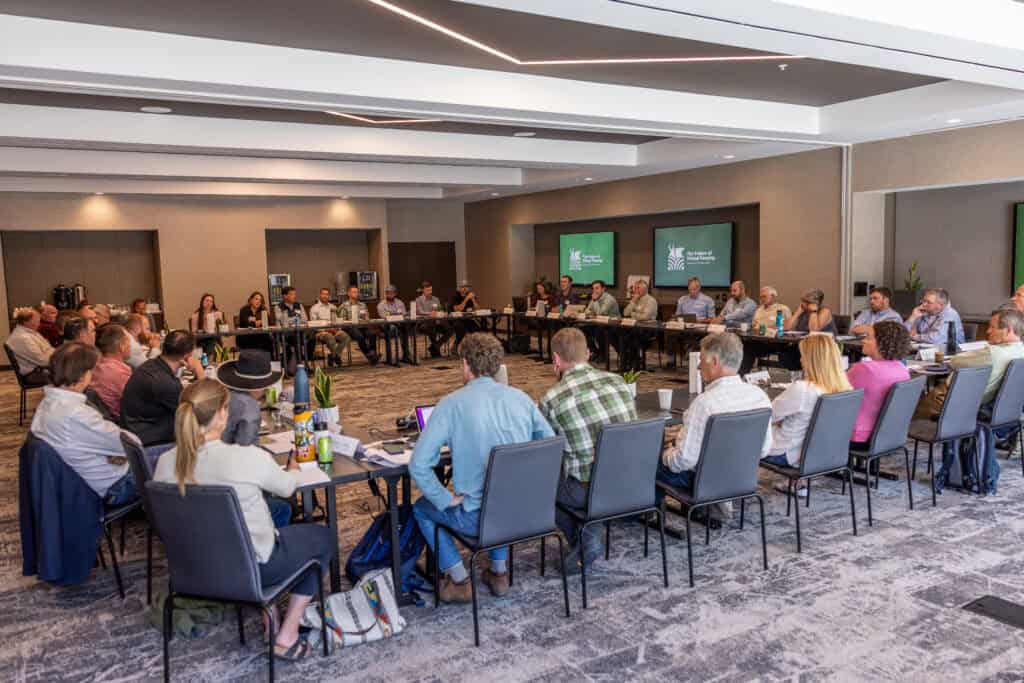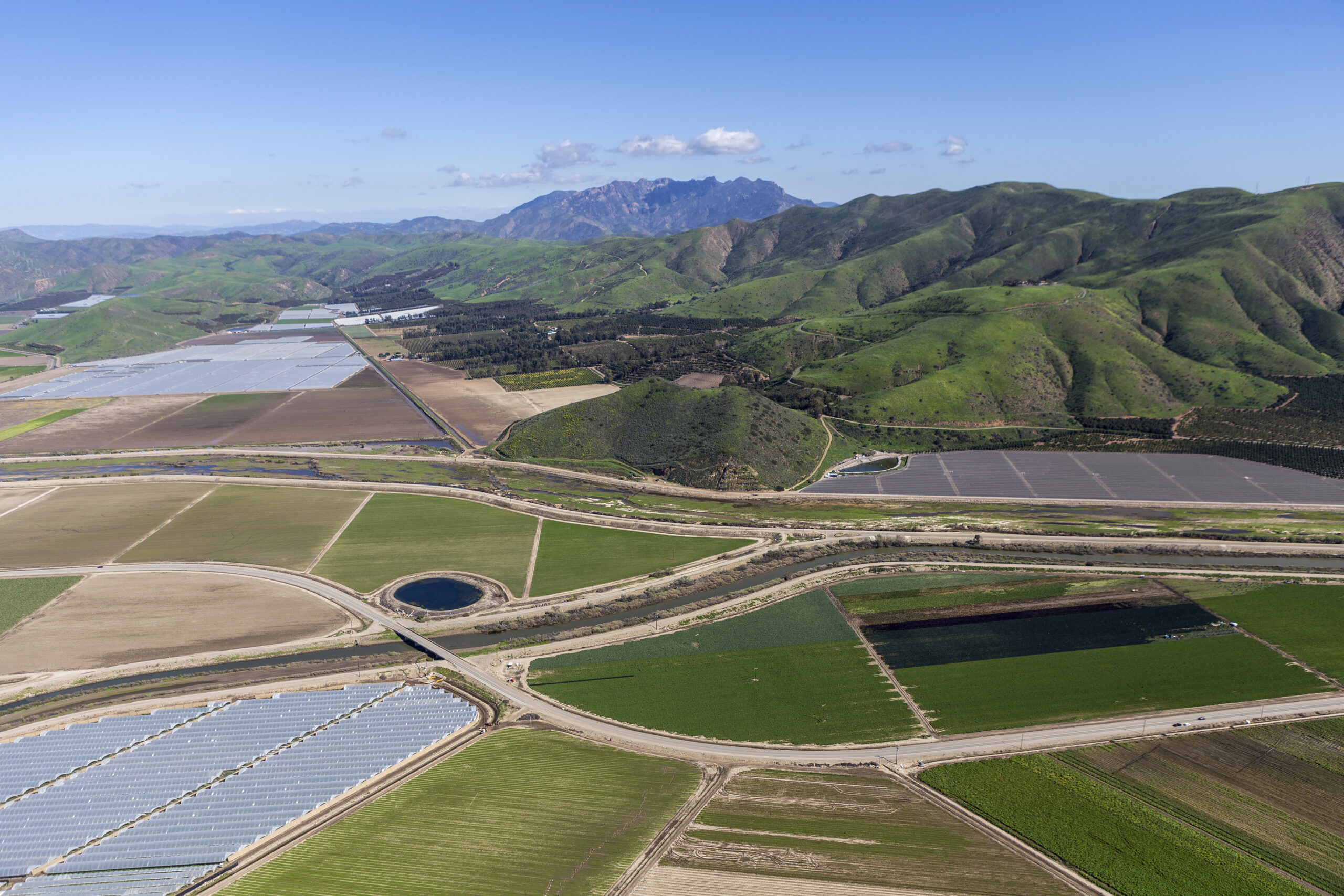
BOZEMAN, MT – Earlier this month, the Property and Environment Research Center (PERC) co-hosted the largest virtual fencing workshop of its kind in Bozeman, uniting experts across technology, agriculture, government, and conservation communities to discuss the latest developments in the field and analyze how the game-changing technology could be applied to support wildlife conservation. The summit was co-hosted with the Beyond Yellowstone Program, with generous sponsorships from the Greater Yellowstone Coalition, World Wildlife Fund, and the University of Wyoming’s Ruckelshaus Institute of Environment and Natural Resources – MacMillan Private Lands Stewardship Program, with support from the Alumbra Innovations Foundation.
There has been a steady rise in the use of virtual fencing technology among ranchers in the Western U.S. throughout the past few years, with the ranching industry shift aiming to alleviate the continued headaches caused by physical barbed-wire fencing—a decades-old practice that requires continued, costly maintenance while creating massive barriers for migratory wildlife. The revolutionary technology works by establishing a virtual fence network through a series of signal towers and GPS collars worn by cattle that provide auditory and physical stimuli to herds approaching geo-fenced areas, proving to be a solution with countless benefits for land management, ranchers’ wallets, and wildlife conservation.
Taking place from June 12 – June 14, PERC’s workshop addressed the growing need to understand applications, evaluate outcomes, and accelerate adoption of the technology. By convening over 40 industry leaders, the summit provided the opportunity for experts to weigh in on the current state and potential applications of the technology to benefit land, wildlife, and water resources, which barriers need to be eliminated in order to scale the technology’s use and address financial feasibility, and outline a clear blueprint and corresponding research steps for the future of virtual fencing.
The summit’s goal was to understand opportunities, barriers, and potential strategies to accelerate the adoption of virtual fencing for ranching operations in the West and elevate its potential conservation benefits. Key topics include the current state of the technology, conservation implications, and key barriers to scale.
“I was thrilled to co-host the workshop with PERC and help facilitate this important conversation,” says Arthur Middleton, associate professor of wildlife management and policy at the University of California, Berkeley, and director of the Beyond Yellowstone Program. “Virtual fencing has huge potential to enhance agricultural productivity while improving conservation outcomes across the West, from opening migration routes to reducing human-wildlife conflict. This workshop helped bring together early adopters and other key stakeholders to more quickly realize those goals.”
PERC is leading the next phase of this industry shift through its funding and partnership with several ranchers across the West, launching a virtual fencing project last fall. By directly engaging the ranching and environmental communities—which are too often at odds with each other—with this pioneering technology, the initiative will evaluate virtual fencing technology for both migratory wildlife conservation and its effect on agricultural production.
“We are beyond encouraged by the enthusiasm we saw earlier this month for virtual fencing technology among our diverse group of partners,” notes Brian Yablonski, CEO of PERC. “This pioneering technology is poised to revolutionize agriculture, land management, and conservation for the better, and we look forward to continuing to convene leaders and form partnerships to accelerate its development and implementation for wildlife conservation.”
Additional information about virtual fencing can be found here.


